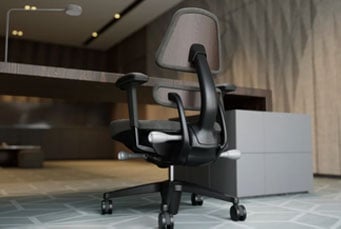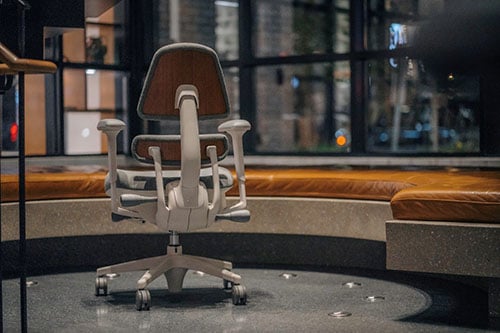Comfortable sitting is an important priority, particularly for those living with debilitating conditions like piriformis syndrome. Today we will explore ways to find comfortable seating, essential features to look for in an office chair, potential pitfalls to watch out for and consider the standing desk option.
Understanding the nature of Piriformis Syndrome
Piriformis syndrome is a painful condition caused by the irritation or compression of the piriformis muscle in the buttocks. Sitting for long periods of time can certainly make this condition worse. However, there are proactive steps you can take to make your sitting hours more enjoyable, and a well-designed office chair can make a world of difference. It's an investment in your health and comfort to opt for a high-quality, ergonomic chair.
Let’s Investigate the Keys to Sitting More Comfortably
Ergonomic Design: Choose an office chair that supports your spine's natural curvature and promote good posture. Look for features like a supportive but soft cushion, pelvis support, a two-part back system, a tilt system and adjustability.
Cushioning: The seat cushion is crucial. A contoured, high-density foam cushion is a smart choice, providing softness and adequate support. The seat should support your hips and thighs properly. This can help alleviate painful pressure points on your piriformis muscle.
Pelvis Support: Pelvis support is good for your spinal health as it encourages a neutral posture, which reduces pressure on the lumbar region and helps to distribute weight evenly.

A Two-Part Back System: A two-part back system on an office chair offers better support by giving you adjustability options on two different sections of your spine – the pelvis and the upper back.
Tilt System: A tilt system is the preferred choice over a reclining system because it keeps your posture correctly aligned, unlike reclining chairs that can cause your spine to curve.
Adjustability: Make sure that your chair offers plenty of adjustability options, so you can fine-tune its settings. Customizing your chair to suit your unique requirements, can make a remarkable difference in your overall comfort and well-being.
What to watch out for when you suffer from piriformis syndrome
Low-Quality Chairs: Don't sacrifice quality for price. Consider the consequences. While they may seem to save you money, they can lead to lots of discomfort and health issues down the road.
One-Size-Fits-All: Sitting in a chair that doesn't adapt to your body can lead to discomfort, backaches, and even chronic pain.
Hard or Mesh Seats: Your choice of seat cushioning can make or break your sitting experience. When you sit on a chair that is unforgiving, the pressure on your buttocks and hips increases and will compress the piriformis muscle, leading to pain and discomfort.
Non-Ergonomic Chairs: Ergonomics is a critical factor in your well-being, especially during long hours at the desk. Non-ergonomic chairs have style, but they often don’t give you the necessary support for maintaining proper posture.
Considering the Alternative - Is a Standing Desk the Better Option?
While standing desks are popular, they might not be the best solution people suffering with piriformis syndrome. The variety of alternating between sitting and standing can reduce the strain on your muscles and joints, including the piriformis. Sitting comfortably and taking breaks to stand can boost both comfort and productivity.
Sitting comfortably with piriformis syndrome requires a well-designed office chair. Investing in a quality chair isn't just about comfort; it's about safeguarding your long-term health and productivity. Your body will thank you for it in the long run.

Recent Post

In today's work culture, many of us spend...

If you’re reading this, you probably have...

Exercises to Avoid With a Herniated Disc
March 6, 2025A herniated disc can put a serious damper on...

Gentle Back Exercises for Lower Back Pain & Herniated Discs
February 17, 2025Adding a cushion to your office or gaming chair...









